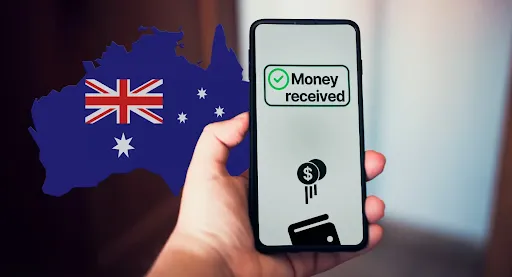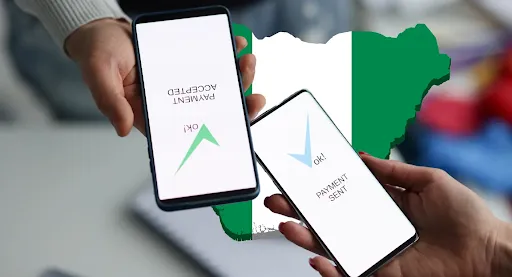
If you're considering starting a money transfer business in Australia, you're tapping into a high-demand industry where businesses and individuals need fast, secure, and cost-effective ways to send and receive money globally. However, entering this market requires a deep understanding of regulations, licensing, compliance, and technology.
This guide explores why a money transfer business in Australia is a profitable opportunity, the key remittance trends, and the step-by-step process to launch a successful Money Transfer Operator (IMTO) in Australia.
All money transfer businesses in Australia must register as Remittance Service Providers with AUSTRAC to comply with Anti-Money Laundering (AML) and Counter-Terrorism Financing (CTF) regulations.
Some IMTOs may need an AFSL from ASIC if they provide additional financial services beyond remittances, such as currency exchange or investment transfers.
Technology is the backbone of a successful money transfer business in Australia. Customers demand fast, secure, and affordable transfer options.
A high-quality remittance system should offer:
All transactions must meet Payment Card Industry Data Security Standard (PCI-DSS) to prevent fraud and data breaches.
To process international payments, your business must partner with banks, payment aggregators, and correspondent financial institutions.
Having multiple payment options increases customer convenience and transaction volume.
Non-compliance can lead to heavy fines, business shutdowns, or legal actions.
Once your business is operational, you need an effective marketing strategy to attract customers.
Australia is one of the world’s most multicultural countries, with 30% of its population born overseas. This high immigration rate leads to a strong demand for international money transfer services as migrants send funds home to support their families.
According to the World Bank, Australia has one of the highest remittance outflows in the world. In 2023, over $17 billion USD was sent from Australia to other countries, creating a massive market for IMTOs.
| Year | Total Remittance Outflow (USD) |
|---|---|
| 2019 | $16.2 billion |
| 2020 | $14.8 billion |
| 2021 | $15.6 billion |
| 2022 | $16.9 billion |
| 2023 | $17.3 billion |
Table 1: Yearly Remittance Outflows from Australia (Last 5 Years)
Source: World Bank Open Data – Personal remittances, paid (current US$)
The largest beneficiaries of remittances from Australia include:
| Country | Amount Sent (USD) |
|---|---|
| India | $5.2 billion |
| China | $2.1 billion |
| Philippines | $1.6 billion |
| Vietnam | $1.2 billion |
| Pakistan | $1.1 billion |
Table 2: Yearly Remittance Receiving Countries from Australia (Last 5 Years)
Source: World Bank Open Data – Personal remittances, paid (current US$)
This indicates a steady demand for money transfer services catering to these regions.
Australia is one of the most advanced fintech markets, with a strong shift toward digital banking and mobile payments. As traditional remittance services decline, fintech-driven IMTOs are becoming more popular due to:
With billions of dollars flowing out of Australia annually, starting a money transfer business in Australia can be highly profitable. If structured correctly, it offers:
The money transfer industry in Australia is growing rapidly, fueled by high remittance outflows, a strong immigrant population, and digital financial innovations. By launching a compliant and technology-driven money transfer business, entrepreneurs can tap into this billion-dollar industry and build a successful IMTO in Australia. By following this guide—obtaining licenses, leveraging secure technology, forming strong banking partnerships, and implementing robust marketing strategies—you can establish a profitable money transfer business that serves Australia’s growing remittance market.
An International Money Transfer Operator (IMTO) is a business licensed by the Australian Transaction Reports and Analysis Centre (AUSTRAC) to facilitate international remittances from individuals and businesses in Australia to recipients overseas.
Australia has a large immigrant population and high remittance outflows, making it an attractive market for money transfer services. Over $17 billion USD was sent abroad from Australia in 2023, primarily to Asia, Africa, and Oceania.
To start an IMTO in Australia, you need to:
There is no fixed capital requirement by AUSTRAC. However, substantial investment is needed for technology, regulatory compliance, and liquidity management to ensure smooth operations.
IMTOs in Australia can facilitate money transfers through:
The top continents receiving remittances from Australia include:
The registration process with AUSTRAC typically takes 4-8 weeks, provided that all compliance and documentation requirements are met. Additional approvals may be required for businesses handling large transactions.
Yes, fintech companies can register as remittance providers under AUSTRAC and partner with banks or payment networks to facilitate money transfers.
IMTOs in Australia must adhere to strict AML/CTF laws, which include:
To launch a successful IMTO, you should:

